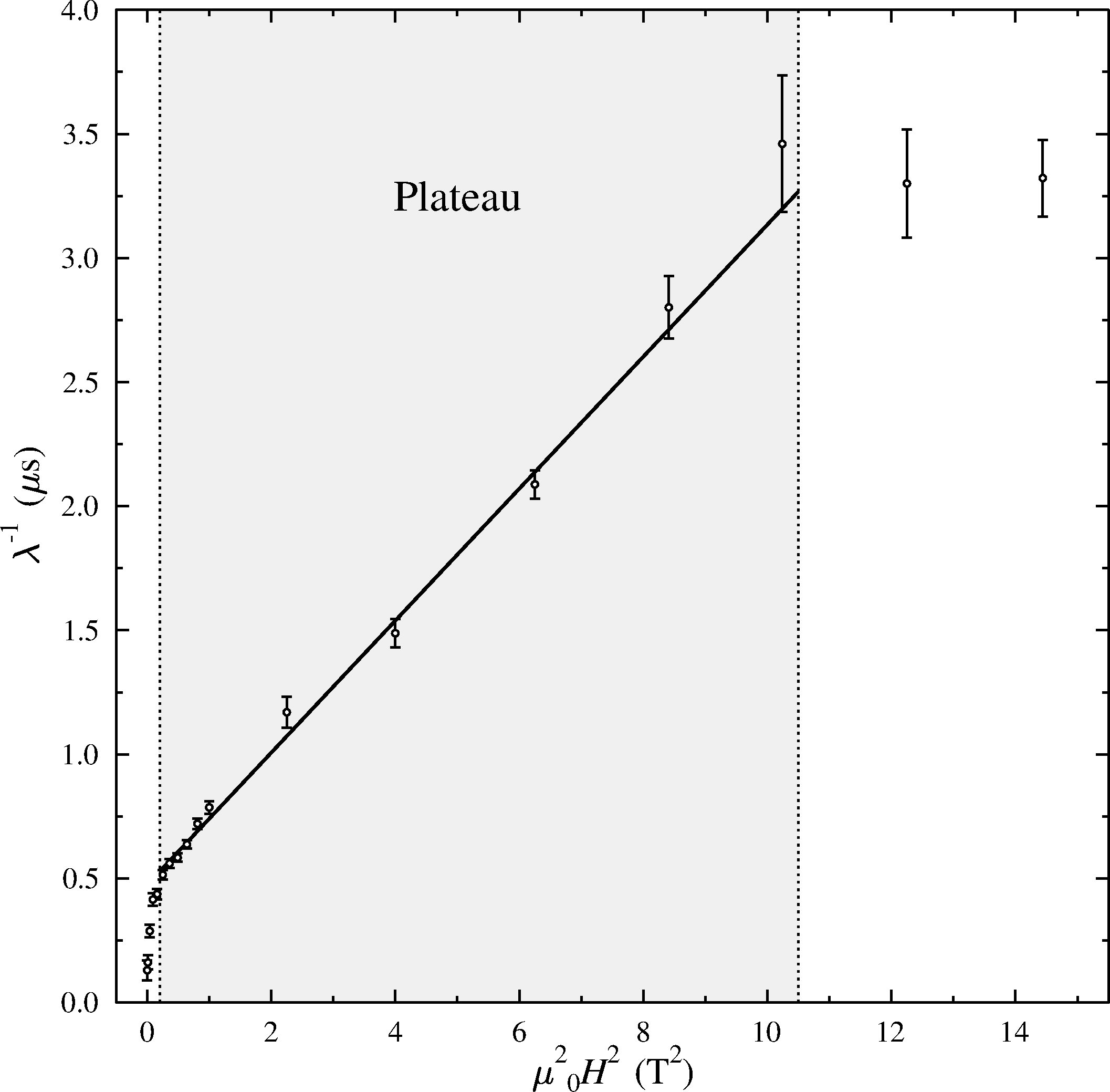Frustrated magnets have competing interactions that conspire to prevent magnetic ordering. Unlike most magnetic materials, the application of a magnetic field can lead to a discontinuous growth in the magnetization via a series of steps and plateaux. In this study, positive muons were used at ISIS to explore the magnetic fluctuations in just such a magnetization plateau.
The material Ca3Co2O6 has ferromagnetic chains of cobalt ions coupled antiferromagnetically on a triangular lattice, which leads to strong magnetic frustration. Below 10K it shows a series of steps and plateaux in its magnetization, but between 10 and 25K it has a broad magnetization plateau running from 0.5 to 3.6T.

Inverse of the muon spin relaxation rate against the square of the applied field, showing the simple trend evident in the plateau region
Positive muons are used to investigate magnetic order and dynamics in many magnetic systems. They are implanted into the sample where they stop at sites of high electronegativity and the time-evolution of their spin direction is monitored by measuring the direction of positrons emitted when they subsequently decay. There had not previously been any studies of magnetization plateaux using the technique and it was interesting to find out what information could be obtained from such an experiment. Ca3Co2O6 was an ideal starting point because it has a broad magnetization plateau in a field range accessible to the new HiFi muon spin relaxation spectrometer at ISIS.
The results show that in the magnetization plateau the muon spin relaxation rate follows a simple trend governed by a constant distribution of magnetic fields at the muon stopping site and a constant fluctuation time. Initial results on other materials show that this behaviour is common to other systems with magnetization plateaux and so future experiments using this technique will be fruitful.
Peter Baker, James Lord and Dharmalingam Prabhakaran
Research date: May 2010
Further Information
Contact:
Peter Baker or James Lord
Further reading:
PJ Baker et al, Dynamic fields in the partial magnetization plateau of Ca3Co2O6, J.Phys 23 (2011)
